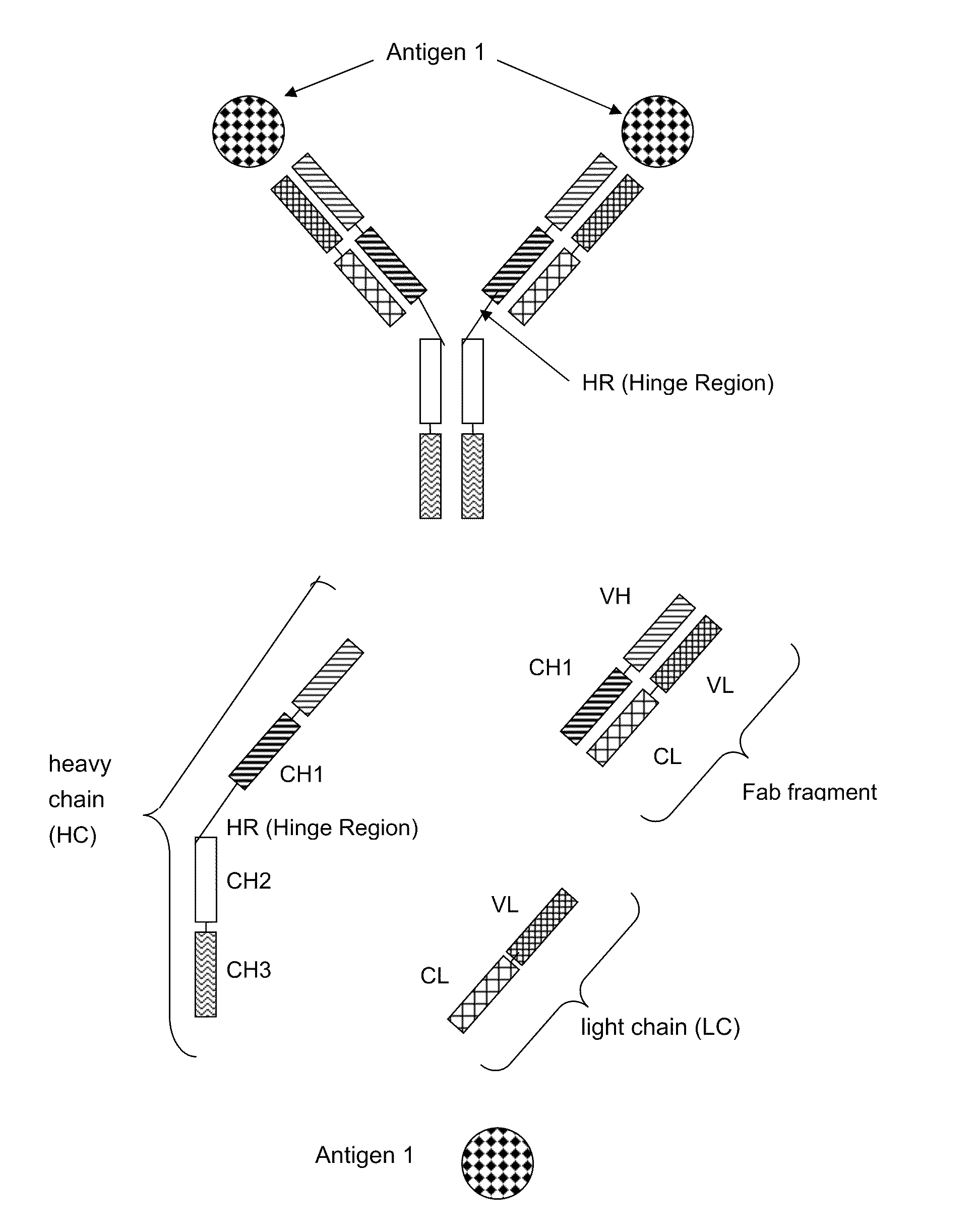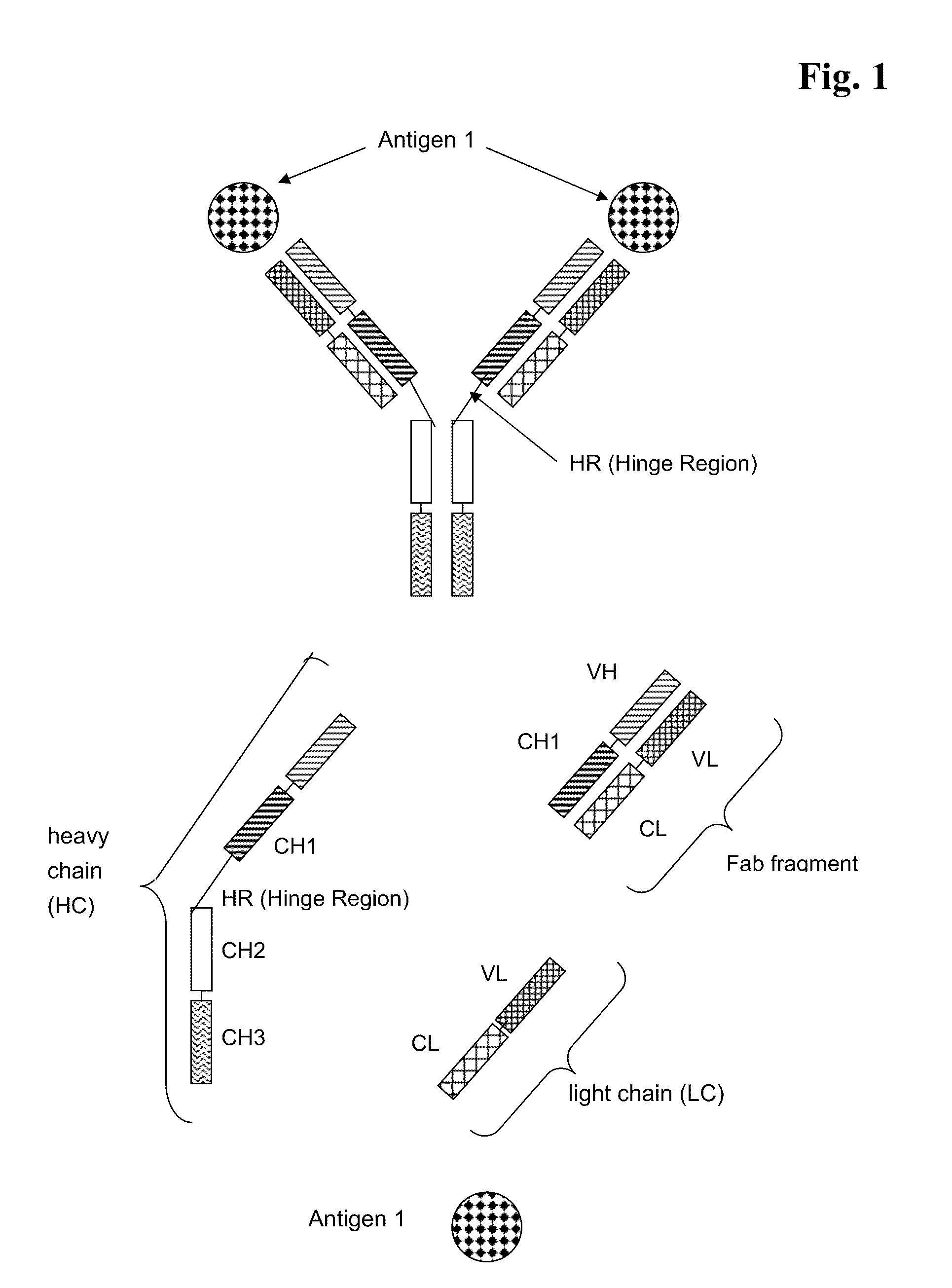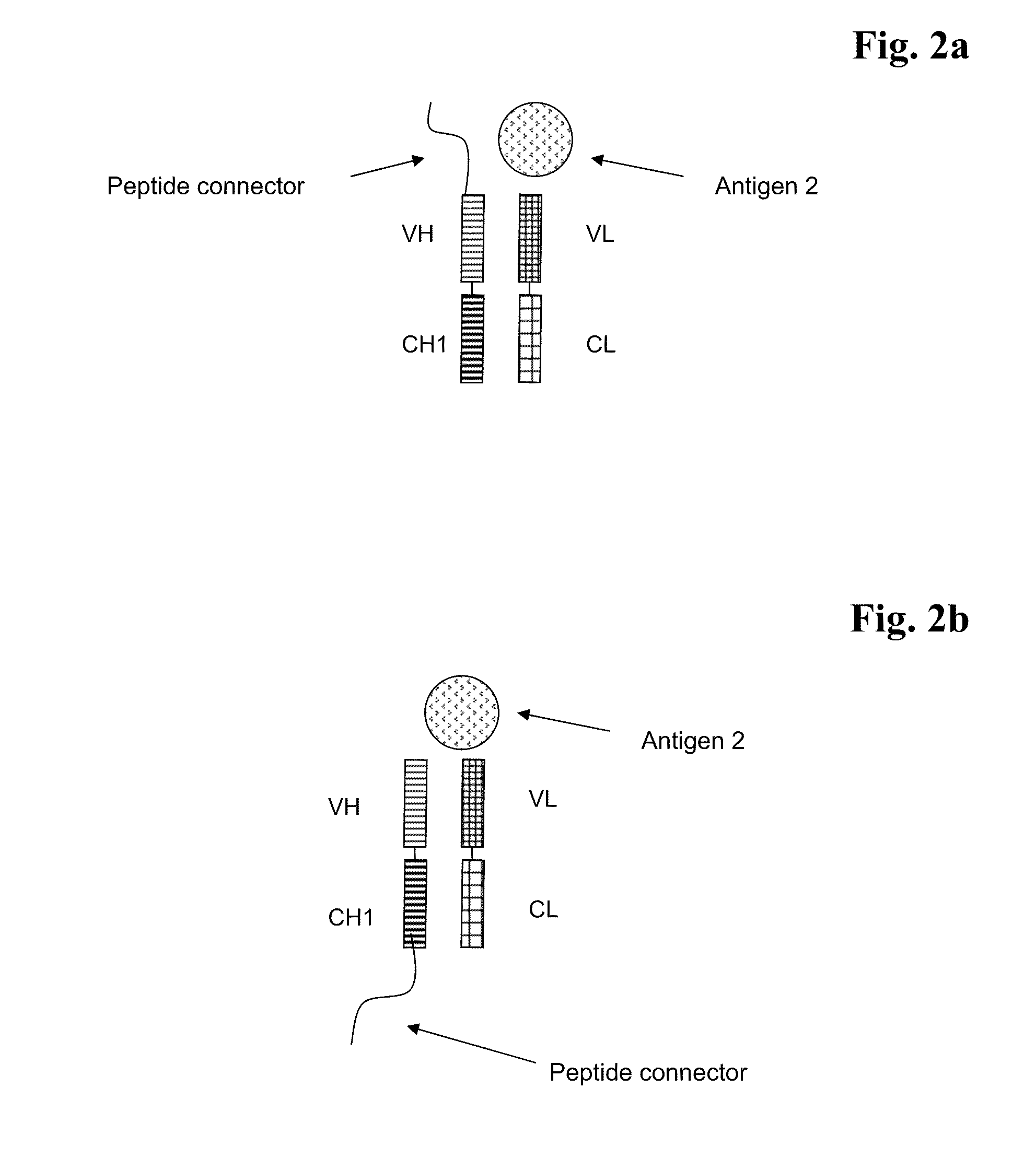Bispecific Antigen Binding Proteins
- Summary
- Abstract
- Description
- Claims
- Application Information
AI Technical Summary
Benefits of technology
Problems solved by technology
Method used
Image
Examples
example 1
Production, Expression, Purification and Characterization of a Bispecific and Tetravalent Antibody Recognizing Ang-2 and VEGF-A
[0226]In a first example a bispecific tetravalent antibody without a linker between the respective antibody chains recognizing Ang-2 and VEGF-A was made by fusing via a (G4S)4-connector a VH-CL domain fusion against VEGF-A to the C-terminus of the heavy chain of an antibody recognizing Ang-2 (SEQ1 or a corresponding IgG1 allotype). In order to obtain the bispecific tetravalent antibody this heavy chain construct was co-expressed with plasmids coding for the respective light chain of the Ang-2 antibody (SEQ3) and a VL-CH1 domain fusion recognizing VEGF-A (SEQ2). The scheme of the respective antibody is given in FIG. 5.
[0227]The bispecific tetravalent antibody is generated was described in the general methods section by classical molecular biology techniques and is expressed transiently in HEK293F cells as described above. Subsequently, it was purified from th...
example 2
Production, Expression, Purification and Characterization of a Bispecific and Tetravalent Antibody Recognizing Ang-2 and VEGF-A
[0230]In a second example a bispecific tetravalent antibody without a linker between the respective antibody chains recognizing Ang-2 and VEGF-A was made by fusing via a (G4S)4-connector a VH-CL domain fusion against VEGF-A to the N-terminus of the heavy chain of an antibody recognizing Ang-2 (SEQ4 or a corresponding IgG1 allotype). In order to obtain the bispecific tetravalent antibody this heavy chain construct was co-expressed with plasmids coding for the respective light chain of the Ang-2 antibody (SEQ3) and a VL-CH1 domain fusion recognizing VEGF-A (SEQ2). The scheme of the respective antibody is given in FIG. 6.
[0231]The bispecific tetravalent antibody was generated as described in the general methods section by classical molecular biology techniques and is expressed transiently in HEK293F cells as described above. Subsequently, it was purified from t...
example 3
Production, Expression, Purification and Characterization of a Bispecific and Tetravalent Antibody Recognizing Ang-2 and VEGF-A
[0234]In a third example a bispecific tetravalent antibody without a linker between the respective antibody chains recognizing Ang-2 and VEGF-A was made by fusing via a (G4S)4-connector a VH-CH1 Fab domain against Ang-2 to the C-terminus of the heavy chain of a CH1-CL exchange antibody recognizing VEGF (SEQ5 or a corresponding IgG1 allotype). In order to obtain the bispecific tetravalent antibody this heavy chain construct was co-expressed with plasmids coding for the respective light chain of the Ang-2 antibody (SEQ3) and a VL-CH1 domain fusion recognizing VEGF-A (SEQ2). The scheme of the respective antibody is given in FIG. 7.
[0235]The bispecific tetravalent antibody was generated as described in the general methods section by classical molecular biology techniques and is expressed transiently in HEK293F cells as described above. Subsequently, it was purif...
PUM
| Property | Measurement | Unit |
|---|---|---|
| Digital information | aaaaa | aaaaa |
| Fraction | aaaaa | aaaaa |
| Density | aaaaa | aaaaa |
Abstract
Description
Claims
Application Information
 Login to View More
Login to View More - R&D
- Intellectual Property
- Life Sciences
- Materials
- Tech Scout
- Unparalleled Data Quality
- Higher Quality Content
- 60% Fewer Hallucinations
Browse by: Latest US Patents, China's latest patents, Technical Efficacy Thesaurus, Application Domain, Technology Topic, Popular Technical Reports.
© 2025 PatSnap. All rights reserved.Legal|Privacy policy|Modern Slavery Act Transparency Statement|Sitemap|About US| Contact US: help@patsnap.com



